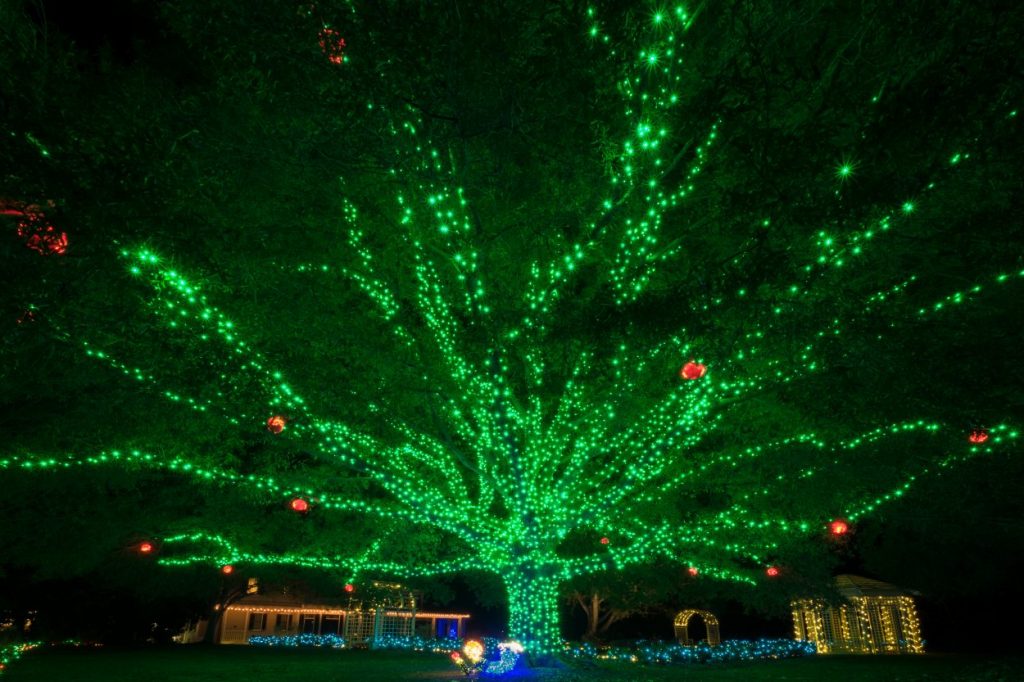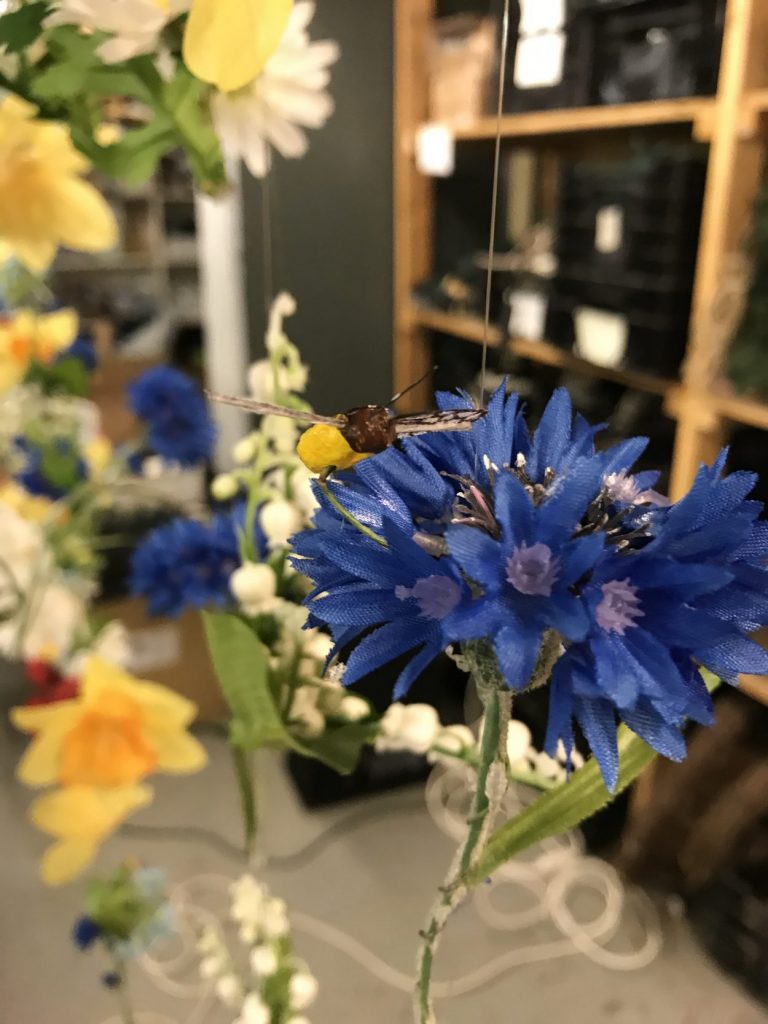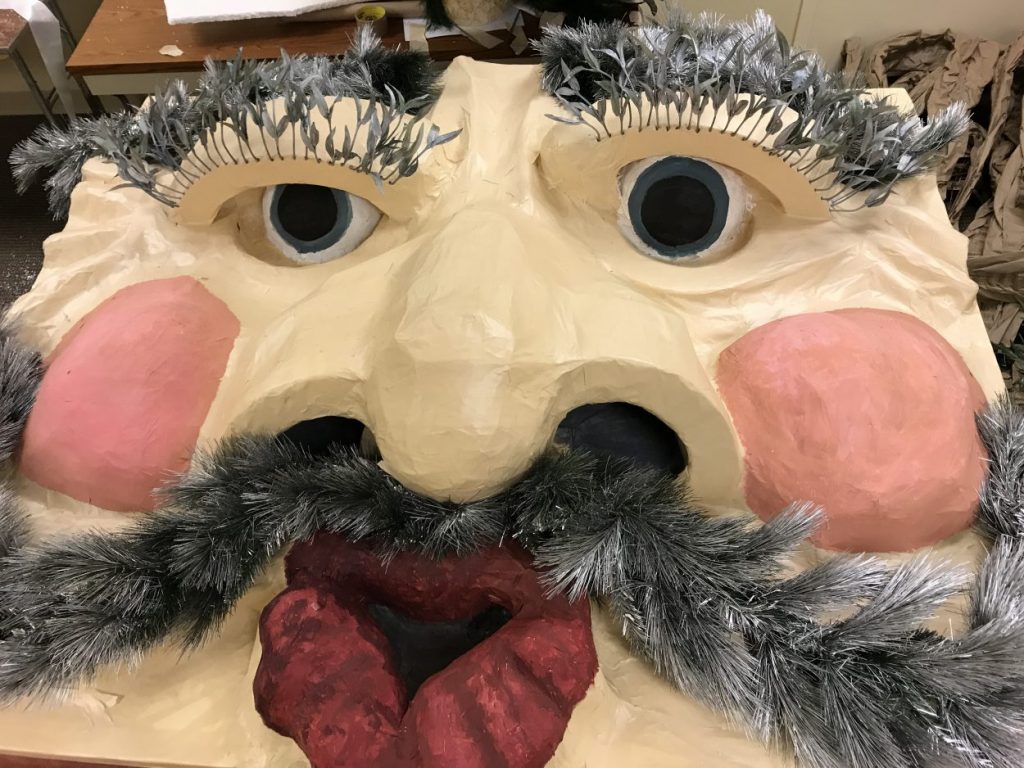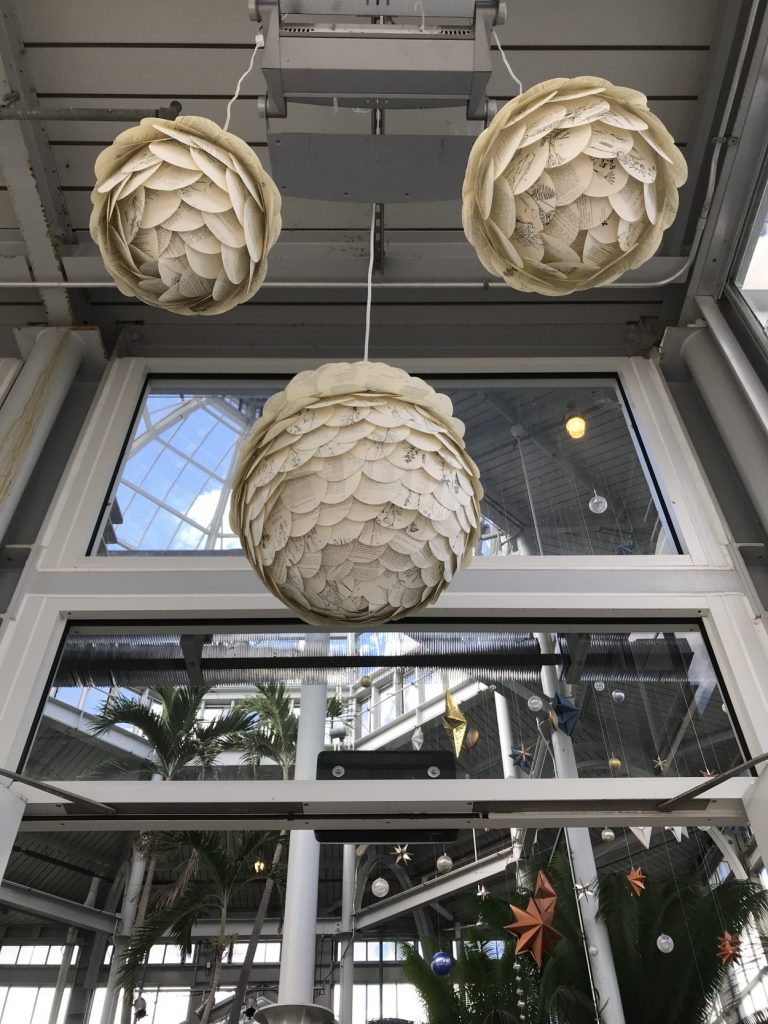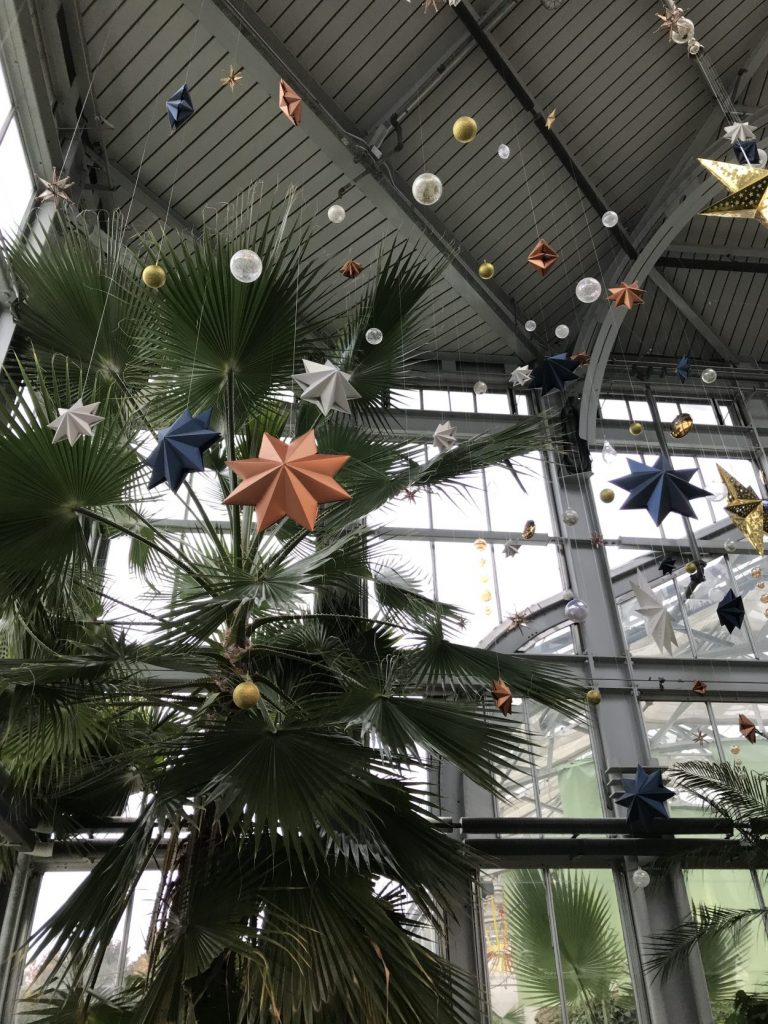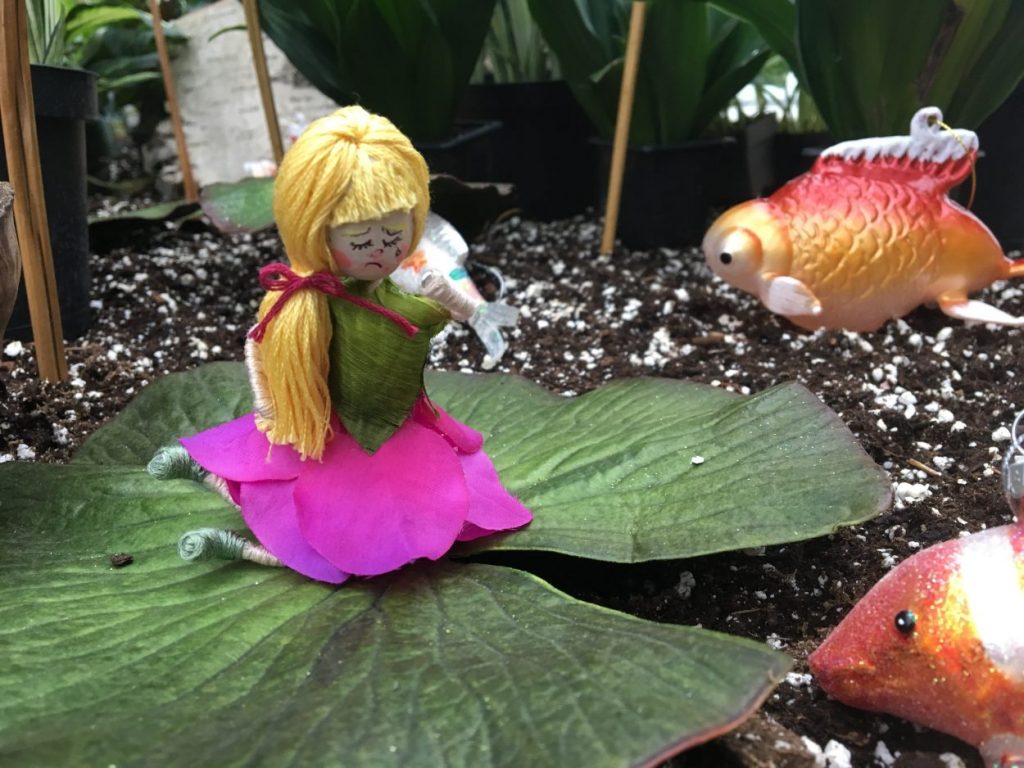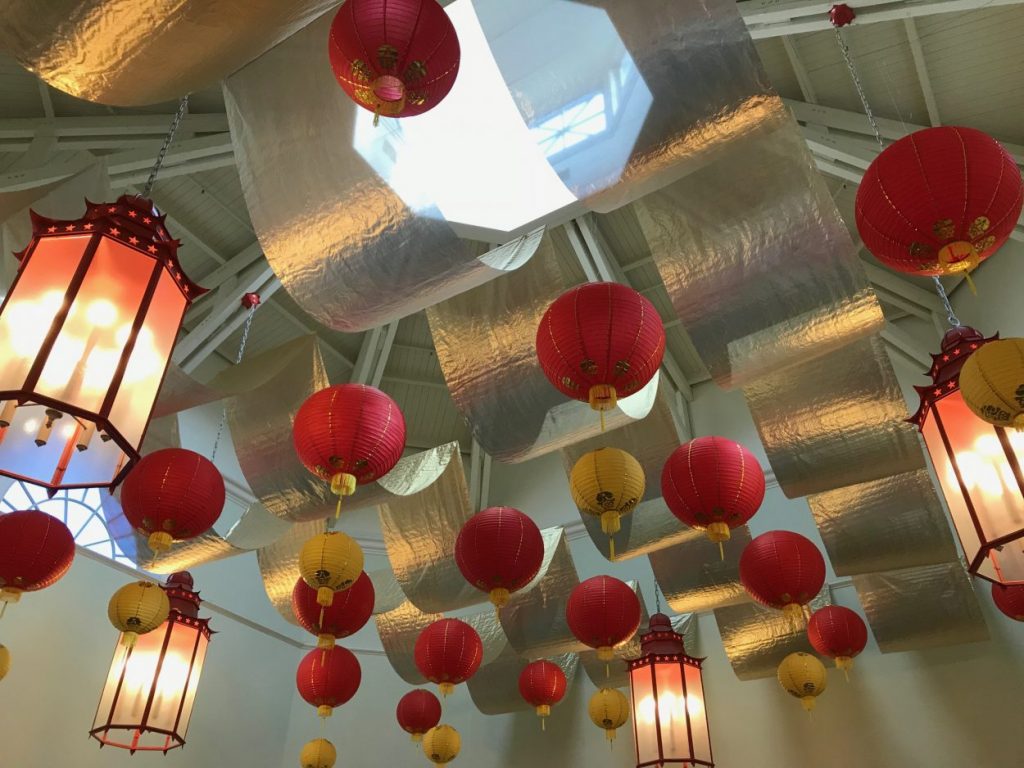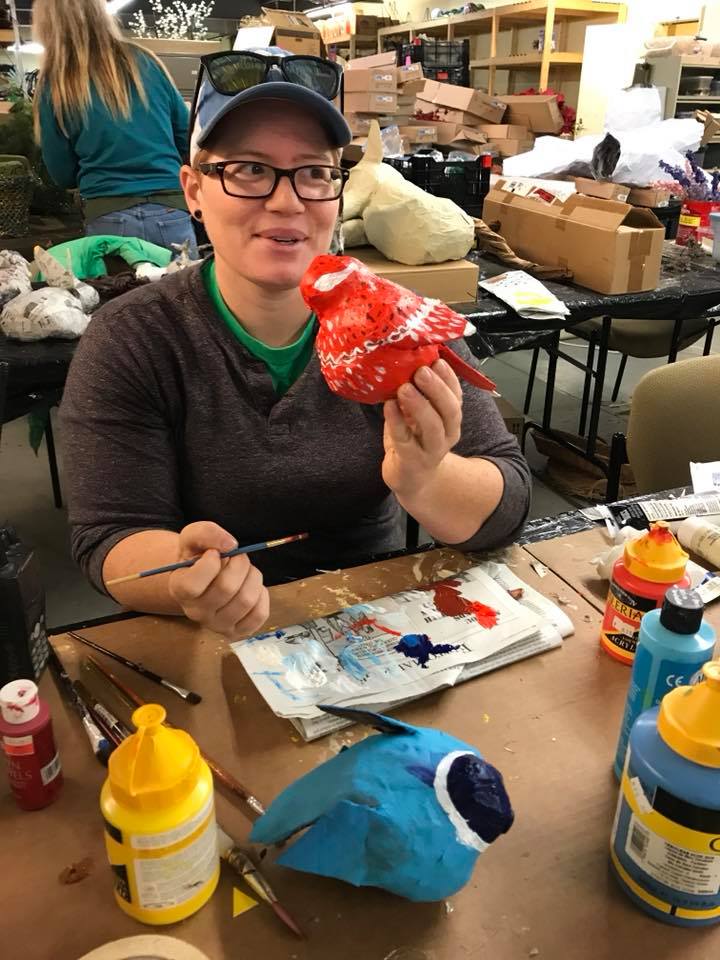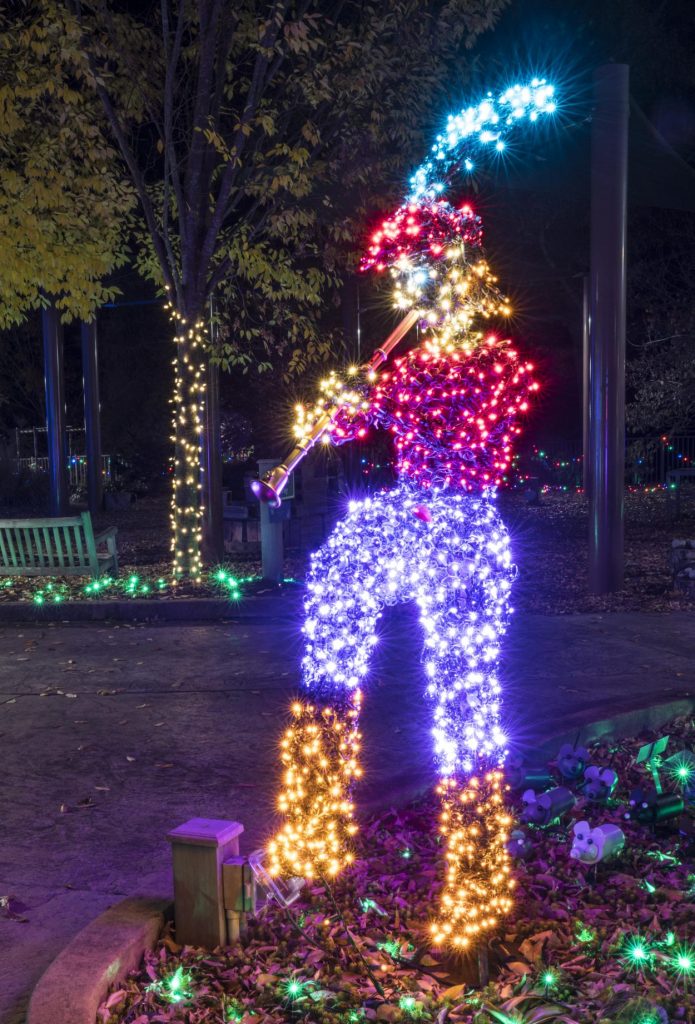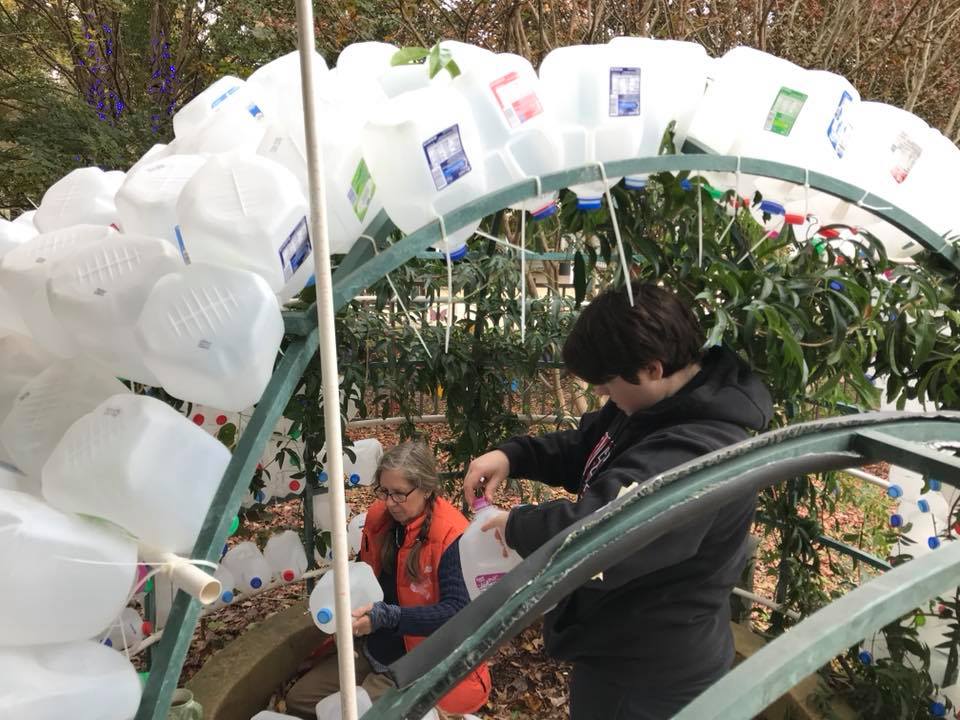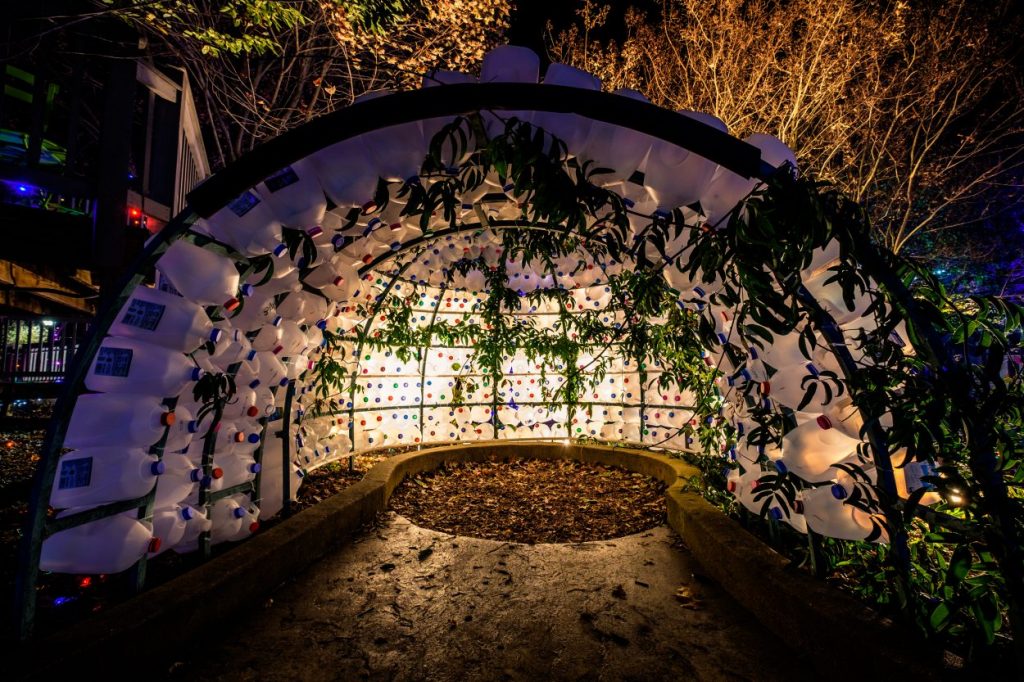Stories in Lights
Dominion Energy GardenFest of Lights
After a year of preparation and planning and months of stringing lights, it’s finally here: Dominion Energy GardenFest of Lights, Naturally Ever After presents: Stories in Lights. You’ll find your favorite stories, from fairy tales and folklore to time-treasured classics, crafted in lights and illustrated in elaborate displays. Here’s an insider’s view at the process of how it all came together. Enjoy!
We planned the show and our theme at least a year in advance. Our dedicated staff and volunteers began creating handmade decorations at group work days starting in August. Staff and volunteers started setting out the lights as early as October. And we don’t just mean a few volunteers. There were more than 300 volunteers who help with the preparation for GardenFest, and they worked a total of nearly 7,000 hours!
We love how garden volunteers are an integral part of this process, and how their creativity shines through in the show’s details — from modeling the child under The Giving Tree after a staff member to telling our stories to visitors as they walk though the displays.
This year’s theme, Stories in Lights, allows us to
incorporate tales that span cultures and time, explore natural phenomena, teach life lessons, celebrate the seasons … and ultimately, connect people through plants.
We tell 25 stories in all—through both outdoor lights and botanical displays! Finding them all can be like a scavenger hunt! Just so you know what you are looking for, we’ll give you some highlights here.
Inspiration for indoor displays includes:
· In the children’s book “Miss Rumphius,” the title character is encouraged by her grandfather, an artist and traveler, to make the world more beautiful. She plants countless, colorful lupines along the fields and highways of coastal Maine, and becomes known as the Lupine Lady. This children’s picture book connects generations and demonstrates the power of natural beauty.
· Chinese New Year—Tradition recounts how a fire-breathing dragon descended the mountain every year, frightening villagers and pillaging crops. Among Asian-inspired ornamentals, discover how a wise sage kept the dragon away and saved the day! This legend explores cultures and human’s interaction with the natural world.
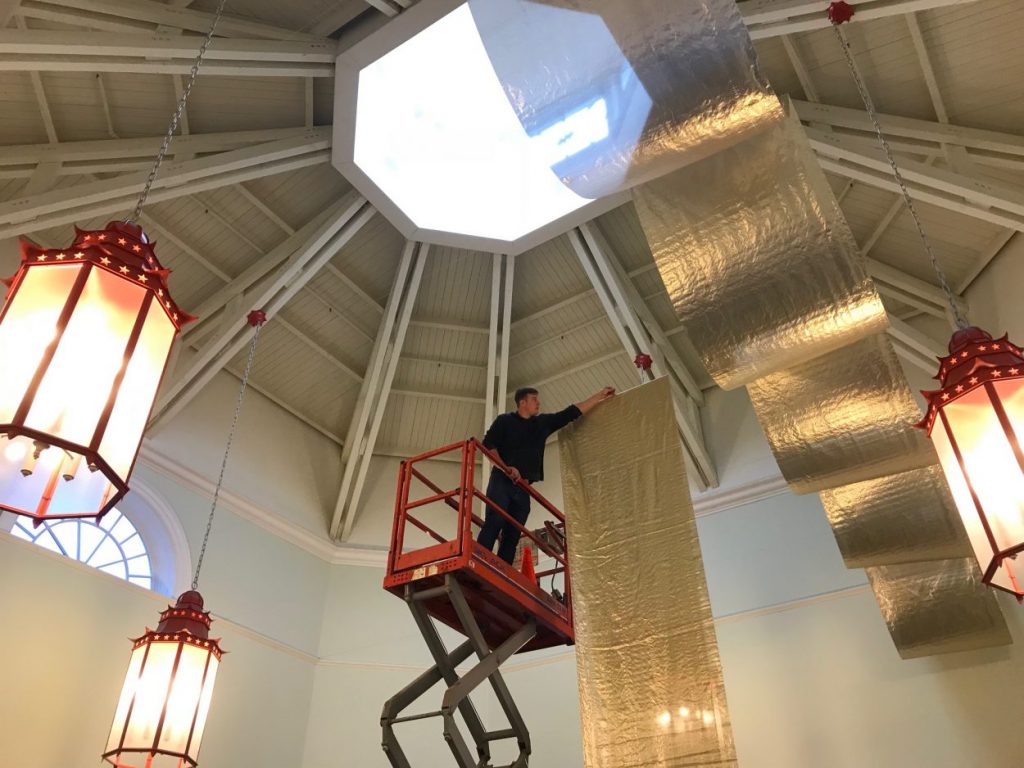
Horticulturist Dean Dietrich hanging gold ribbon as part of the Chinese New Year theme in the Robins Visitor Center. There are 80 yards of gold fabric draping the Atrium ceiling!
· Jack and the Beanstalk recounts a familiar rags-to-riches tale, complete with fe-fi-fo-fum treasures: the giant’s gilded harp, golden coins and the goose that lays golden eggs. This fairy tale demonstrates overcoming obstacles and how plants (including magic beans!) profoundly affect our lives.
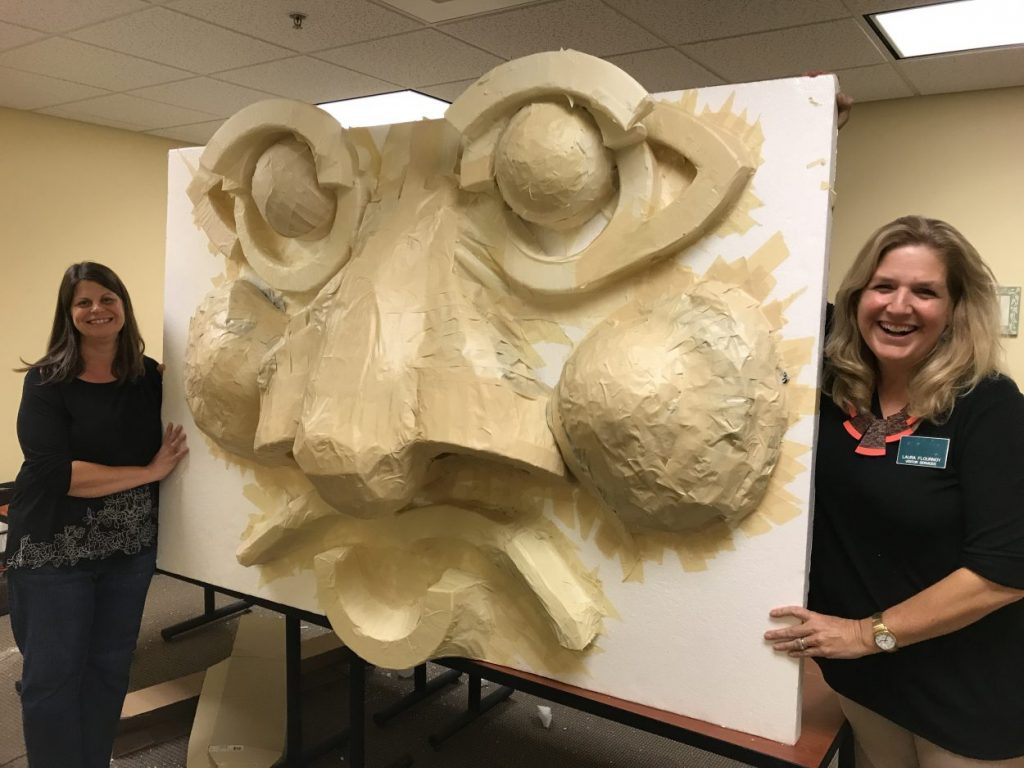
Registrar Laura Lee Folman and Visitor Services Associate Laura Flournoy normally work desk jobs, but they are also creative and artistic, so each year they help us create something magnificent for GardenFest too. See what they made?
· Old Man Winter explores how blustery winter morphs into glorious spring. Vivid personification and symbolism deepen this cross-cultural look at seasonal change.
· Moon and the Stars—Generations ago, a spinster’s treasured jewelry and hair ornaments miraculously transformed into the Celestial, forever suspended in the moonlit sky. This Filipino legend reflects Asian culture while exploring wonders of creation.
· How the Mouse Stole Fire—A white-footed mouse visited the valley people and stole their fire. He hid the fire in his elderberry flute and carried it to the mountain people so they could move from a world of darkness to light. And thus, the sun was created. Native People’s legends often explore phenomena in nature.
· The Story of the Root Children follows imaginary children’s seasonal responses to Mother Nature. This classic cleverly explores man’s interaction with changing seasons.
· Thumbelina follows a wee woman’s adventures in the natural world, including encounters with dangerous creatures and ultimately, her Prince Charming. This happily-ever-after classic explores one’s adventurous spirit and journey to self-acceptance.
· Origin of Orchids—Imagine that time began with melting snow that created rivers and waterfalls. Rising vapors formed clouds and eventually a rainbow. Immortal spirits gathered around its beauty, causing the rainbow to shatter with their weight. Sparkling fragments floated to earth, transforming into breathtaking orchids. New Zealand folklore creatively examines the water cycle and enchantment of flora.
· The Secret Garden—An abandoned garden, brought back to bloom, leads a young girl and her invalid cousin to discover the inherent mysteries of nature. This timeless classic exemplifies Nature’s healing power through beauty.
Can you find them all? With both indoor and outdoor displays, there’s plenty to see, and after you walk around looking at the stories in lights, you can warm up while you look at model trains, listen to stories, or view the hundreds of intricate botanical decorations.
Want to learn more about the details of our botanical displays? Keep reading!
Robins Visitor Center Entrances
The exterior entrances feature Asian lanterns and pink cherry blossom lights, which hint at the Asian themes greeting visitors in the Atrium and entrance hallway: the Chinese New Year and The Four Gentlemen.
Robins Visitor Center Atrium: Chinese New Year (folklore)
A long ago in the mountains, there lived a horrible creature named Nian. Every year, on the first day of the year, the creature would awaken and descend upon the village, eating all the grain, livestock, and even young children. Villagers lived in fear, hiding from the beast each year. One year, an old man visited the village and questioned their fear. He protected them, preventing the beast from pillaging the village, but he couldn’t remain forever. He finally shared that the creature is afraid of loud noises, the color red, and strange creatures. From then on, each new year, the villagers made noise with drums and fireworks, hung red on their doors, wore face masks, and carried lanterns. Nian never returned again.
Design elements: gold fabric draping the ceiling, red/gold lanterns hanging from above, a red Torii gate at the entrance to the Garden, and a dragon-creature circling the gate
Handmade element: The Torii gate was made by the Ginter Geezers, out of concrete forms and wood. The Chinese character at the top of the gate translates to “garden.”
Robins Visitor Center Hallway: The Four Gentlemen (folklore)
The hallway features The Four Gentlemen, or the flowers of the four seasons, reminiscent of a common theme in Chinese paintings. The flowers represent the virtues of the seasons. The plum blossom represents faithfulness, hope, and humility. It is the promise of spring in the cold of winter. The chrysanthemum represents courage. A late bloomer, chrysanthemums often don’t bloom until the late days of autumn, and their colorful, cheerful flowers demonstrate perseverance in times of difficulty. Bamboo (or in our interpretation, lotus) represents steadfastness, tranquility, vitality, and strength, thriving in summer. And lastly, the orchid represents beauty, elegance, and peace. Orchids that grew naturally around China were difficult to find, often hidden behind rocks with its flowers lost among its basal leaves.
Design elements: mum balls suspended from the ceiling; plum blossoms, chrysanthemum, lotus, and orchid flowers in the garland; Asian parasols hanging from the ceiling
Fun fact: the mum balls consist of over 400 yellow and orange chrysanthemums
Robins Room: Jack and the Beanstalk (folklore/fairy tale)
After trading a cow for magic beans in town, Jack’s mother shows her frustration by throwing the beans out the window. When a huge beanstalk appears overnight, Jack climbs the beanstalk to find a mean-spirited giant and his golden treasure, supposedly stolen from the villagers below. Unable to help himself, Jack steals back the golden coins, a goose that lays golden eggs, and a golden harp. The enraged giant (fee-fi-fo-fum!) chases Jack, who escapes by chopping down the beanstalk after he descends.
Design elements: golden eggs, feathers, musical ribbons, beanstalks growing up the chandeliers, money plant, and locust pods.
Garden Café: The Story of The Root Children by Sibylle von Olfers
In this garden-based book, the root children spend the winter asleep underground. When spring comes, the snow-drop, forget-me-not, buttercup, daisy, and poppy busily prepare to emerge, helping the ladybugs, beetles, and bumble-bees get ready for the warm season ahead. When autumn arrives, the root children prepare to return underground where they will sleep until the next spring arrives.
Design elements: flower curtains featuring spring ephemeral flowers, gnarly winter grapevine wreaths decorated with the colors of the coming spring.
Conservatory
Dome House: The Origin of the Moon and Stars (Philippine myth)
A long, long time ago, the sky was said to be a mere arm-stretch away overhead. In a small Filipino village there was a young woman with long, silky, jet black hair. She took pride in her looks; when she wasn’t brushing her hair with a beautiful silver crescent-shaped comb, she wore a string of diamonds and jewels in her hair and jeweled lace around her neck. One day, as she was pounding grains of corn and rice with a mortar and pestle, her mother noticed the jewels around her head, the silver comb stuck in her hair, and the jeweled lace around her neck. She scolded her and told her take them off while working. So, she hung the comb and jewelry on the sky above her. Wanting to finish her work in a hurry, she pounded the grains hard by raising the mortar really high. She didn’t notice hitting the sky which went up higher as she hit it with her pounding. Soon the sky went higher up, out of reach, along with her comb and jewelry; they became the moon and the stars.
Design elements: white poinsettias, stars, jewels hanging from above
Handmade element: over 600 paper stars were traced, cut, folded, and glued by staff and volunteers.
East Wing: The Origin of Orchids (New Zealand folklore)
At the beginning of time, the only parts of our planet visible were the snowcapped peaks of the very highest mountains. From time to time, the sun would melt the snow, creating waterfalls, rivers, and streams running into the sea. The rising vapor created clouds, obscuring the view. The sun was determined to see the earth again, so it punctured the clouds, creating a rainbow spanning the sky. The immortal spirits rushed to see the dazzling color, singing their hearts out, full of joy. It attracted so many, the rainbow creaked under their weight. The rainbow shattered into a myriad of sparkling fragments covering the earth. As those fragments floated to earth, they transformed into orchids.
Design elements: a rainbow of orchids and colored crystals
West Wing: How the Mouse Stole Fire (legend from the Miwok tribe in North/Central California)
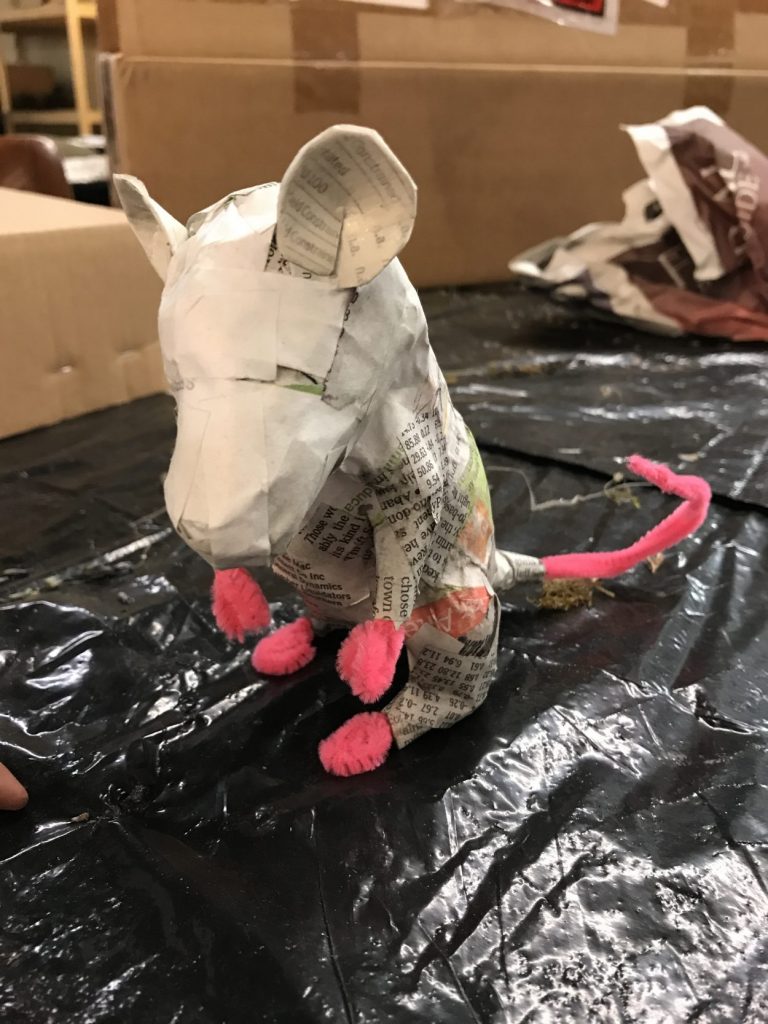
Horticulturist Leah Purdy made the papier-mâché mouse out of newspaper, masking tape and pipe cleaners. “I balled up the newspaper until I got it in the shapes I wanted and covered them with masking tape and then papier-mâché. I make the hands and tail with pipe cleaners and then painted it with acrylic paint,” she says.
In the story of How Tol-le-loo Stole Fire, the white-footed mouse travels from the dark Sierra Nevada mountains to the valley in order to steal their fire. He lulls the animals to sleep with flute playing and then steals the fire, tucking it away in his flute, and flees. Once awake, the animals realize the fire has been stolen and pursue the mouse. The mouse arrives safely home and wraps the fire in a bundle of leaves and pine needles. As the coyote noses around looking for the fire, it suddenly shoots up into the sky, creating the sun.
Design elements:
Dark mountain scene at the entrance with large trees, covered with cork bark.
Round house in the center of the room with the sleeping animals around the fire, representing where the mouse stole the fire
Sun overhead
Mountains in the distance, with fire burning at the top.
Handmade items: the animals in the roundhouse were made from papier-mâché and then hand painted by staff.
North Wing: Thumbelina (Hans Christian Anderson, retold by Sylvia Long)
Soon after being born from a flower, tiny Thumbelina is stolen away and pursued by many undesirable suitors, including a toad, beetle, and mole. With the help of other kind animals, including a field mouse and a swallow, Thumbelina makes her escape and meets her fairy prince. Messages about freedom, acceptance, courage, and kindness carry the day.
Design elements:
Scenes from Thumbelina depicted on the train table displays
Tree features representations of botanical elements, insects, and animals from the story. The oversized scale of the elements draw viewers into Thumbelina’s tiny world.
Handmade items: The Thumbelinas on the train tables were handmade by volunteers as well as the small fairy-like people in the tree display. The large koi were made from paper mache and hand-painted by staff.
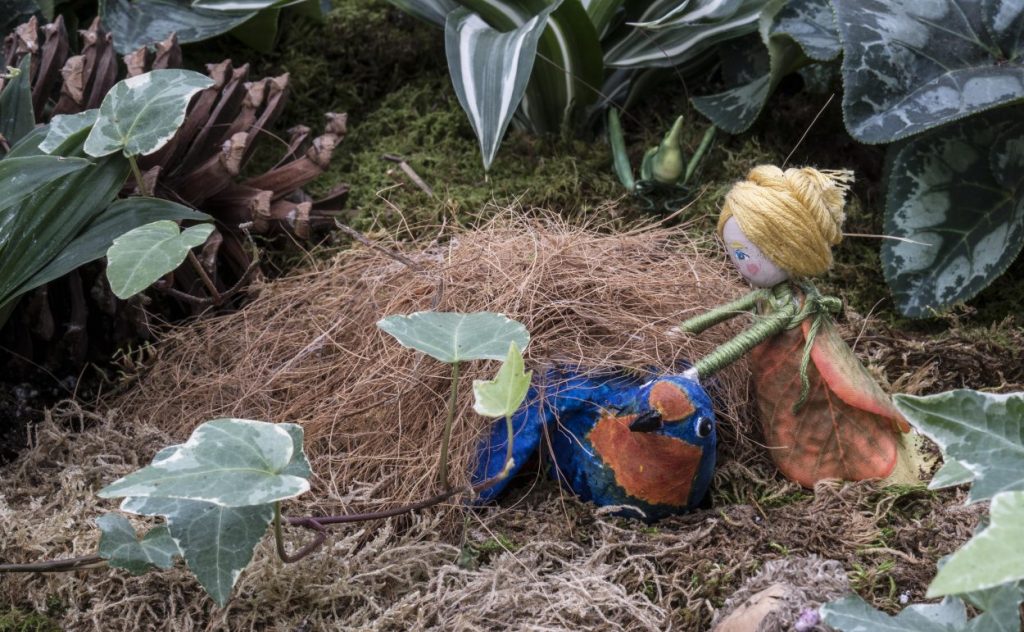
Whether viewing our indoor or outdoor displays, you’ll see stories exploring natural phenomena, teaching life lessons, celebrating the seasons, and ultimately connecting people with plants and each other.
Kelly Education Center Hallway Trees
Decorated by Henrico County Public Schools, the elementary students will interpret nature-based stories, folklore, or myths that represent the diverse Henrico community.
Wall Decals: Myths and Seasonal Celebrations from Around the World
Ancient people around the world created myths and legends to explain seasonal changes, weather, the shift from night to day, and mankind’s close relationship to nature’s cycles. Today, the changing seasons and human interdependence with nature is still celebrated around the world. Countless festivals, holidays, and rituals, both old and new, continue to enrich the lives of families around the world. The display on this wall represents only a small number of these celebrations. The brief summaries here offer only a taste of these rich, sometimes complex traditions. Here’s a PDF with all of the sources for information on our wall decals.
Library Tree: Miss Rumphius by Barbara Cooney
Explore the classic children’s tale, Miss Rumphius, in which Alice Rumphius is inspired by her grandfather, an artist and world-traveler. Challenged by her grandfather to make the world a more beautiful place, she travels the world and lands back in her small town in Maine, where she inadvertently discovers joy and beauty in spreading lupine seeds across the landscape.
Design elements: ornaments featuring globes, sea shells, sailing ships, mermaids, and handmade lupine flowers along with a sea-side scene under the tree. A rocky Maine landscape hangs in the window behind the tree. Needlepoint nature scenes decorate the sconces along the center walkway of the room.
Handmade items: knitted bluebirds and paper lupine flowers.
Library Bookshelf Display
In celebration of the room’s Miss Rumphius theme (making the world a more beautiful place, one person at a time), the library bookshelves have been transformed into a series of mini-galleries highlighting area artisans and their locally-made handcrafted items, while also sharing the stories behind these items and the people who make them.
Reading Room
Based on the classic story, The Secret Garden, by Frances Hodges Burnett, this room highlights the healing power of nature. Botanical decorations on the tree echo the blossoms found in an English garden and the vignette features animals from the story such as sheep, fox, and red-breasted robin.
Of note: all of the flowers decorating the tree were harvested from the Garden and dried by a team of volunteers.
Outdoor Displays Include:
• Humpty Dumpty
• Ugly Duckling
• Tortoise and the Hare
• Charlotte’s Web
• Old MacDonald’s Farm
• Pied Piper
• Princess and the Frog
• The Giving Tree
